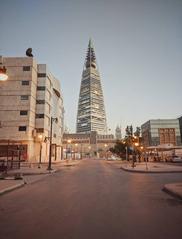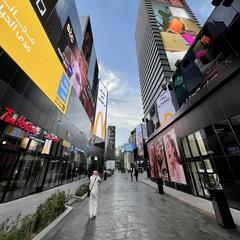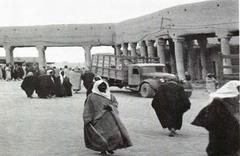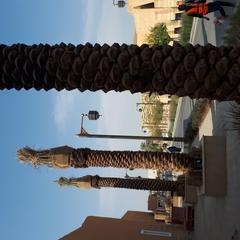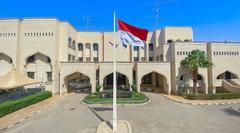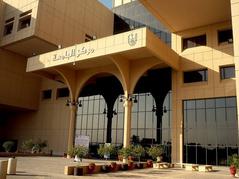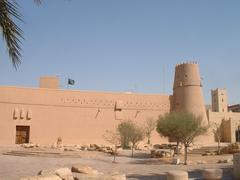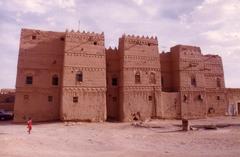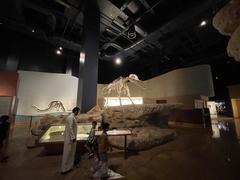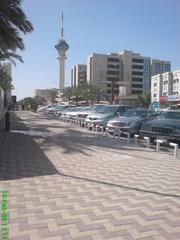Comprehensive Guide to Bab al Yemen in Riyadh, Saudi Arabia
Date: 18/07/2024
Introduction
Bab al Yemen, translating to the ‘Yemen Gate,’ is one of Riyadh’s most esteemed historical landmarks. Its name reflects its historical role as a gateway facing south towards Yemen, symbolizing its strategic importance in connecting Riyadh to the southern regions of the Arabian Peninsula. Originally part of Riyadh’s defensive walls, Bab al Yemen now stands as a reconstructed monument, capturing the essence of traditional Najdi architecture with its mud-brick construction and geometric designs. The gate, surrounded by bustling souks and vibrant cultural landscapes, offers visitors a unique opportunity to delve into Riyadh’s rich history and architectural evolution. This guide provides comprehensive information on visiting hours, ticket prices, cultural insights, and nearby attractions, ensuring a memorable experience for all visitors. For more in-depth historical context, you can refer to the Saudi Tourism Authority and the National Museum of Saudi Arabia.
Table of Contents
- Introduction
- A Glimpse into the Past - History and Significance of Bab al Yemen
- Visitor Information
- Beyond the Gate - A Cultural Crossroads
- Nearby Attractions
- Bab al Yemen Today - A Link to the Past, a Beacon for the Future
- FAQ
- Conclusion
A Glimpse into the Past - History and Significance of Bab al Yemen
Bab al Yemen stands as a testament to Riyadh’s rich history and architectural evolution. While no longer a functioning gate in the traditional sense, its presence evokes a time when Riyadh was a walled city, marked by imposing gateways.
The Walled City and its Guardians - A Look Back
In the past, Riyadh, like many ancient cities, relied on protective walls for defense and to regulate trade and access. Bab al Yemen served as one of the primary entrances to the old city, facing south towards Yemen. This strategic location earned it the name, signifying its role as a gateway to the southern regions of the Arabian Peninsula.
The original gate, constructed using traditional mud-brick architecture, unfortunately, succumbed to the ravages of time. However, its legacy lived on in the collective memory of Riyadh’s inhabitants.
A Modern Tribute - The Reconstruction of Bab al Yemen
Recognizing the historical and cultural significance of Bab al Yemen, the gate was reconstructed in the 1980s. This reconstruction aimed to capture the essence of the original structure while incorporating modern architectural elements.
The new Bab al Yemen, while not an exact replica, stands as a symbolic representation of the city’s heritage. Its design incorporates traditional motifs and materials, offering a glimpse into Riyadh’s architectural past.
Visitor Information
Visiting Hours
Bab al Yemen is accessible to visitors 24/7, but it’s best to visit during daylight hours to fully appreciate its architectural beauty.
Tickets
There is no entry fee to visit Bab al Yemen. However, nearby attractions might have separate ticket requirements.
Travel Tips
- Wear comfortable walking shoes: The area around Bab al Yemen can get crowded, so plan accordingly.
- Carry water and sun protection: Especially during the hotter months.
- Be respectful: Remember to respect local customs and traditions.
Beyond the Gate - A Cultural Crossroads
Bab al Yemen’s significance extends beyond its physical presence. It represents a point of convergence, a place where history, culture, and commerce intertwined.
A Gateway for Trade
As its name suggests, Bab al Yemen facilitated trade routes connecting Riyadh to Yemen and other southern regions. This flow of goods and merchants contributed significantly to the city’s economic growth and cultural exchange.
A Melting Pot of Cultures
The gate witnessed the passage of people from diverse backgrounds, fostering cultural exchange and shaping the city’s identity. Traders, travelers, and pilgrims all passed through Bab al Yemen, bringing with them their customs, traditions, and stories.
A Symbol of Transformation
The reconstruction of Bab al Yemen mirrors the broader transformation of Riyadh. It represents the city’s commitment to preserving its heritage while embracing modernity.
Nearby Attractions
Al Masmak Fortress
Built in 1865, this clay and mud-brick fortress played a pivotal role in the unification of Saudi Arabia. In 1902, King Abdulaziz famously captured the fortress in a daring raid, marking a turning point in the country’s history. Today, Al Masmak Fortress is a well-preserved museum showcasing its historical significance (Saudi Tourism Authority).
Souq al-Zal (Old Riyadh Market)
Just a stone’s throw from Al Masmak Fortress lies Souq al-Zal, a traditional open-air market that offers a glimpse into Riyadh’s past. This bustling marketplace is a sensory delight, with vendors selling everything from traditional garments, spices, and perfumes to dates, handcrafted jewelry, and souvenirs.
National Museum of Saudi Arabia
Located about a 20-minute drive from old Riyadh, the National Museum of Saudi Arabia is a must-visit for anyone interested in delving deeper into the Kingdom’s history and culture. The museum houses a vast collection of artifacts and exhibits that span pre-Islamic times to the present day (National Museum of Saudi Arabia).
Murabba Palace
Built in 1938 by King Abdulaziz, Murabba Palace served as the royal residence and seat of government for a significant period. Located about a 15-minute drive from old Riyadh, the palace offers a fascinating look into the lifestyle of the Saudi royal family in the early 20th century (Saudi Tourism Authority).
King Abdulaziz Historical Center
Dedicated to the life and achievements of King Abdulaziz, the founder of modern Saudi Arabia, this center is a treasure trove of historical information. Located about a 20-minute drive from old Riyadh, the center comprises several buildings, including the National Museum, King Abdulaziz Memorial Hall, and the Murabba Palace.
Bab al Yemen Today - A Link to the Past, a Beacon for the Future
Today, Bab al Yemen stands as a prominent landmark in Riyadh, attracting locals and tourists alike. While the bustling souk that once thrived around the gate has evolved, the area retains a vibrant atmosphere.
Bab al Yemen serves as a reminder of Riyadh’s journey through time. It stands as a testament to the city’s resilience, its ability to evolve while honoring its past. For visitors, it offers a unique opportunity to connect with the soul of Riyadh, to delve into its history, and to appreciate the cultural tapestry that makes the city so captivating.
FAQ
Q: What are the opening hours of Bab al Yemen? A: Bab al Yemen is accessible 24/7, but visiting during daylight hours is recommended.
Q: How much are tickets to Bab al Yemen? A: There is no entry fee to visit Bab al Yemen.
Q: What are some nearby attractions? A: Nearby attractions include Al Masmak Fortress, Souq al-Zal, the National Museum of Saudi Arabia, Murabba Palace, and the King Abdulaziz Historical Center.
Conclusion
Bab al Yemen continues to stand as a symbol of Riyadh’s historical and cultural legacy. From its origins as a crucial gateway in a walled city to its modern reconstruction, Bab al Yemen encapsulates the blend of tradition and modernity that defines Riyadh today. Visitors are not only offered a glimpse into the architectural and historical significance of the site but are also invited to explore the vibrant cultural crossroads it represents. Nearby attractions such as Al Masmak Fortress, Souq al-Zal, the National Museum of Saudi Arabia, and Murabba Palace further enrich the experience, providing diverse insights into the Kingdom’s heritage. Whether traversing the bustling souks or delving into the intricate history of Riyadh’s transformation, Bab al Yemen offers a profound connection to the past while serving as a beacon for the future. For detailed visitor information and travel tips, the Saudi Tourism Authority and the National Museum of Saudi Arabia serve as valuable resources.
